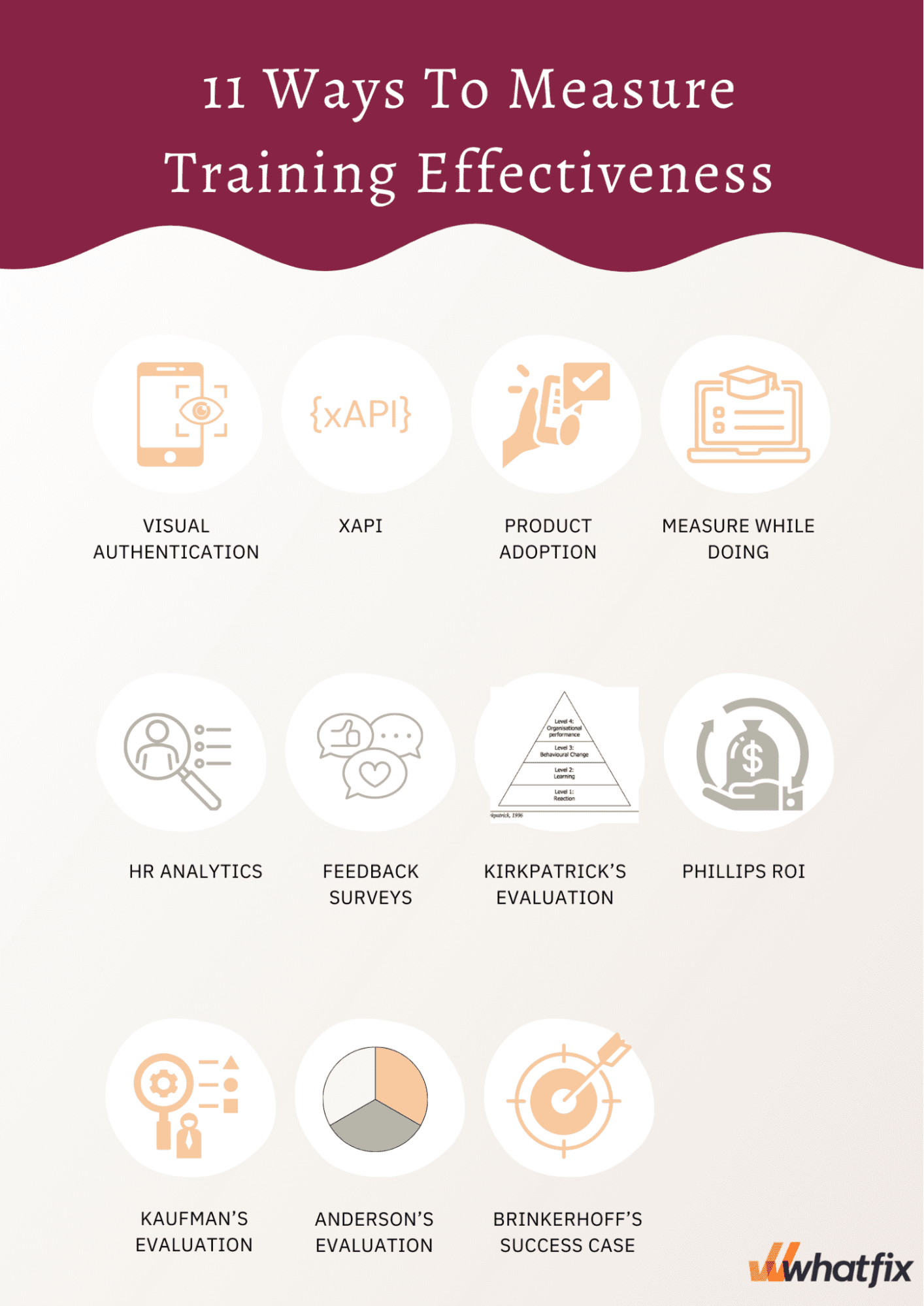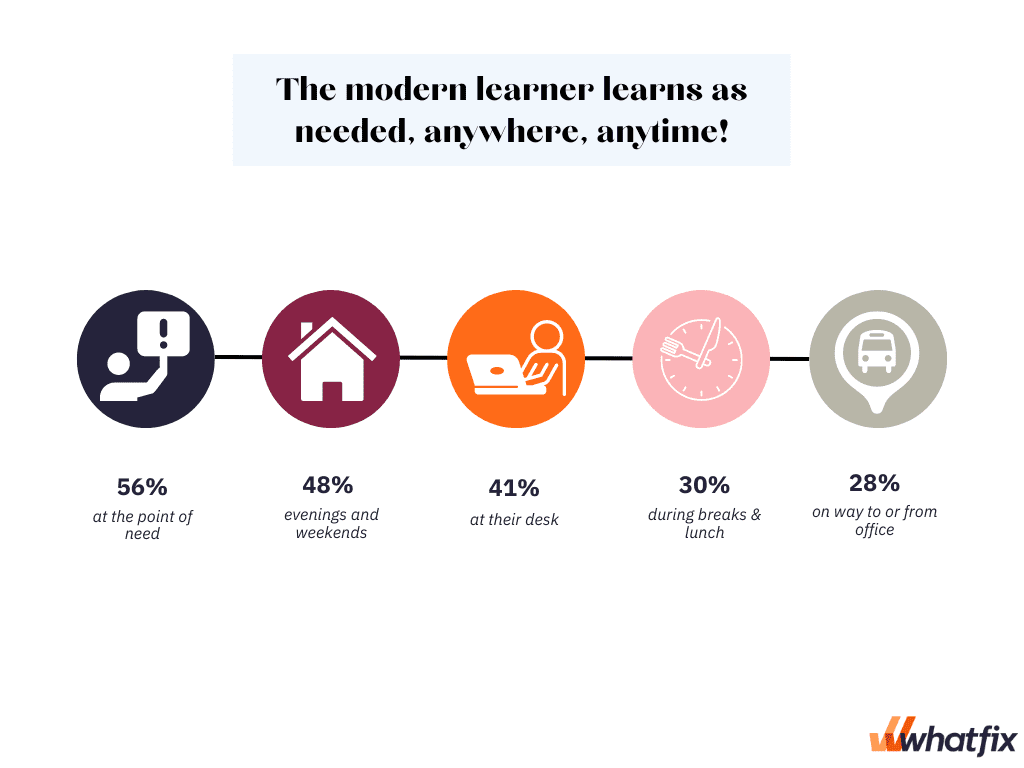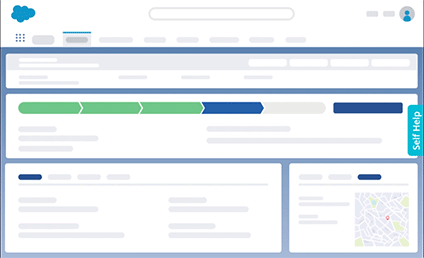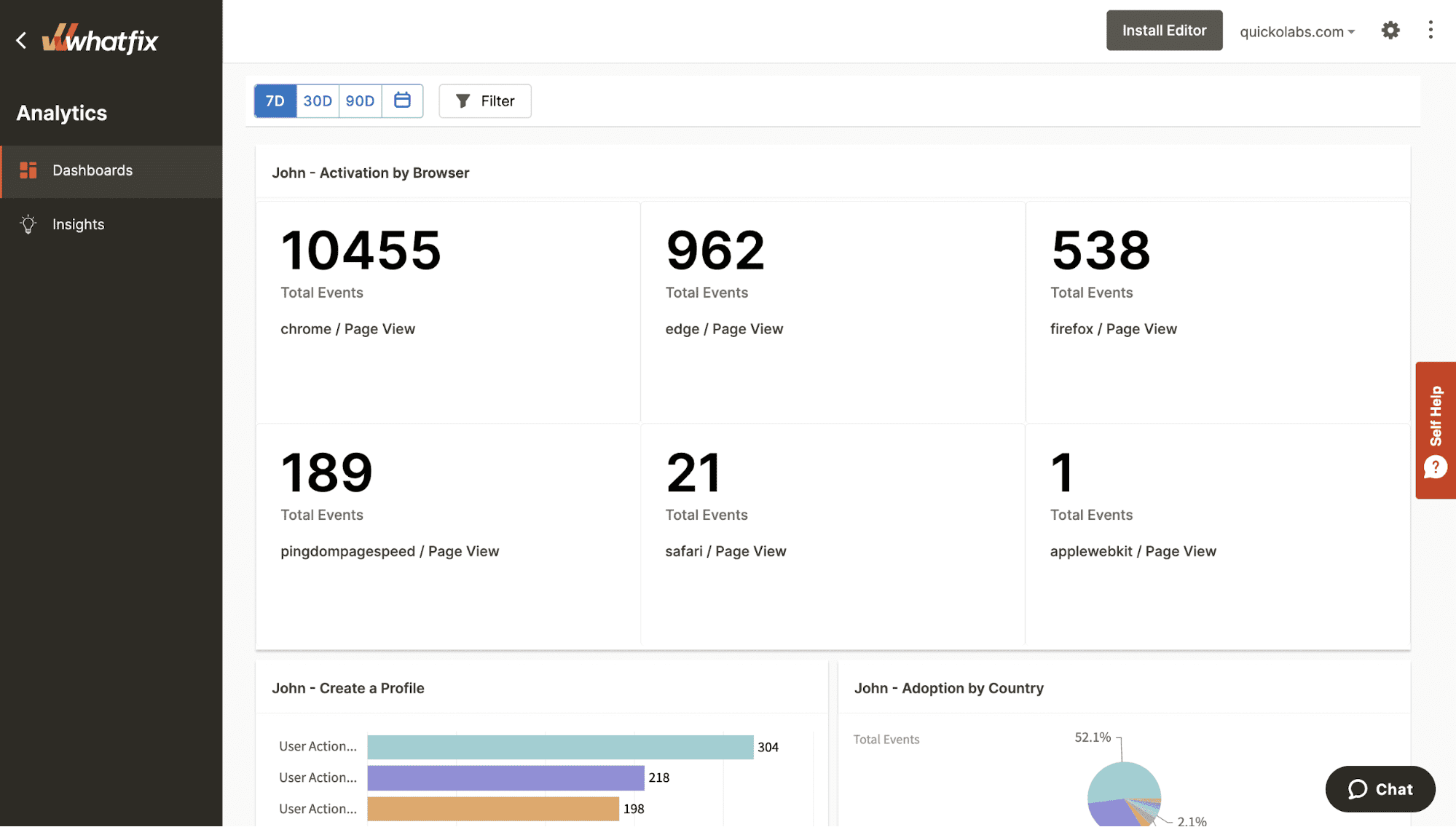

Disha Gupta


Organizations invest significant resources in employee learning and development strategies, without a system to measure training effectiveness, organizations may find themselves unsure of whether their investments are yielding their desired results.
Evaluating training programs is essential to determine their impact on individual performance and overall organizational success.
This article dives into the importance of measuring training effectiveness, explores key methodologies, and highlights best practices for obtaining accurate and actionable insights. By adopting effective evaluation strategies, organizations can unleash the full potential of their training initiatives and strategically align them with their overarching goals.
Training effectiveness refers to the degree to which a training program or initiative achieves its intended goals and produces desired outcomes. It assesses the impact and value of training efforts on individual learners, teams, and the organization as a whole. Measuring training effectiveness involves evaluating the transfer of learning from the training environment to the workplace and assessing the tangible and intangible benefits that result from the training program. By understanding and measuring training effectiveness, organizations can make informed decisions to enhance their training strategies and allocate resources more effectively.
Outside of basic methods such as attendance tracking, completion rates, and skill assessments, it is time to consider new and engaging solutions that shed light on the effectiveness of your training programs. Here are eleven of the best ways to measure your organization’s training effectiveness:

The visual authentication approach measures training effectiveness via visual confirmation of employees completing the learned tasks in real life. Employees upload videos, audios, or images as proof of a task completed by harnessing the learnings from the training sessions. Such visual proof helps managers gauge if the training is successful and tailor future sessions accordingly.
For example, L&D teams record salespersons’ pitches before training and compare them to the call with a prospective client after the training. The difference in the quality of the pitch helps L&D managers make improvements in future training modules.
Nowadays, learning can happen anywhere and anytime, which is great for learners but poses tracking issues for the L&D team. The growing popularity of such blended learning, adaptive learning, long-term learning, and interactive learning experiences led to the advent of Experience API (xAPI).

xAPI (formerly known as Tin Can) content standards aid in the production of personalized training content modules. xAPI tells you exactly where learning is happening, powered by analytics & reporting features.
This communications protocol tracks learning-related activity from different sources and stores it in a learning record store (LRS). This means richer insights are mined that allow L&D teams to measure training effectiveness.
Digital adoption platform, such as Whatfix, harnesses xAPI to understand how users engage with the training content and leverage insights to improve the learning experience. It also presents metrics on content usage, user engagement, and the relevance of help content.

The vast and granular data gathered through xAPIs allow L&D teams to decide how training material can be edited in real-time, as the system understands individual learning preferences and knowledge levels. Consequently, the learner’s attention can be directed at relevant concepts, as the rest is automatically removed from the course.
For application training, measuring software adoption before and after the training is a beneficial outcome-based way to measure training effectiveness. End-user adoption can be measured by conducting pre and post-training assessments, tracking user activity within the software to identify patterns of engagement and utilization, analyzing user feedback and surveys for valuable insights into learners’ experiences and challenges, monitoring performance metrics such as completion rates and task efficiency to assess the real-world application of training, and more.
Some enterprise software provide adoption information within their dashboards to track how much time users spend on the system, how many activities are successfully completed etc. These dashboards show how well users are engaging with the software and hence how well they can apply their learnings on the job.
WIPRO, a leading global IT, consulting & business process services company, leveraged Whatfix DAP to augment their sales training and understand how sales reps leverage software such as CRM, sales portal, and knowledge management system. The digital adoption platform tracked how many times employees accessed the in-app contextual walkthroughs in real-time to identify the gaps in the training. It also gathered user feedback in real-time, right when employees accessed training and applied it to work. Such advanced analytics are critical in delivering an optimized learning experience and improving sales productivity.

Measuring training effectiveness while doing refers to employing real-time assessment methods during the training process to gauge learners’ progress and grasp of the material. This can be achieved through interactive quizzes, polls, and knowledge checks integrated into the training modules, allowing learners to immediately apply what they have learned.
Utilizing training analytics to track learner engagement and progress during the training enables trainers to identify areas of improvement and adjust the training content dynamically. By measuring training effectiveness “while doing,” organizations can ensure learners stay actively engaged, reinforce their understanding, and address any knowledge gaps in real-time, ultimately leading to more effective and impactful training outcomes.
HR analytics play a crucial role in measuring training effectiveness by providing comprehensive data insights and analytics related to training initiatives. These platforms can track and analyze various training metrics, such as completion rates, learner engagement, assessment scores, and time spent on each module.
They also help identify patterns and trends in learners’ progress, allowing HR professionals to understand how effectively employees acquire new skills and knowledge. HR analytics platforms generate visual reports and dashboards, simplify data interpretation and facilitate data-driven decision-making.
By leveraging these platforms, organizations gain a holistic view of training performance, enabling them to assess the impact of training on employee performance, identify areas for improvement, and make informed adjustments to training programs for enhanced learning outcomes and organizational success.
While they may seem like the most basic forms of evaluation, they are highly critical to determine the success of your training program. The approach here is to collect real-time feedback to measure training effectiveness and make required changes to the program immediately without delays. L&D professionals can curate a list of post-training survey questions to collect valuable feedback on company-wide and role-specific training.
Whatfix does this by intelligently gathering feedback on each walkthrough training flow to determine the gaps in your training content. The platform also integrates with survey tools to gather user feedback from specific locations (in-app) to ensure higher response rates.
You can also decode your learners’ relationship with the course with Net Promoter Score (NPS) rating [1 to 10]. This benchmark is commonly used for customer satisfaction analysis and can also measure training effectiveness. The NPS is derived from learners’ answers to the question: “How likely is it that you would recommend the attended training session to a friend or colleague?

The Kirkpatrick Model of training evaluation is best known for analyzing and evaluating the effectiveness and results of employee training programs. It takes into account the style of training, both informal and formal, and rates them against four levels of criteria:
The Phillips ROI Model is a methodology that ties the costs of training programs with the actual results. It builds on the Kirkpatrick Model and classifies data from different types employee training programs to measure:
Kaufman’s model is yet another model built on the Kirkpatrick Model. It is a response or reaction to Kirkpatrick’s model that aims to improve upon it in various ways. Kaufman’s five levels of training evaluation include:
The Anderson learning evaluation model is a three-stage evaluation cycle applied at an organizational level to measure training effectiveness. The model is more concerned with aligning the training goals with the organization’s strategic objectives.
The three cycles of Anderson’s model are:
Brinkerhoff’s success case method is a comprehensive approach, developed by Robert O. Brinkerhoff, to measure training effectiveness. It aims to identify and analyze the impact of training programs by focusing on extreme cases of success or failure.
Brinkerhoff’s success case method helps to answer two very important questions:
Here are the key steps involved in implementing Brinkerhoff’s success case method:
Measuring training effectiveness provides several benefits for organizations. Here are some key advantages:
By measuring training effectiveness, organizations can identify gaps in knowledge, skills, and performance. This information can be used to develop targeted training programs that address specific areas of improvement, leading to enhanced performance and productivity among employees as well as team effectiveness.
Training programs require a significant investment of time, money, and resources. Measuring training effectiveness allows organizations to evaluate the ROI of their training initiatives. By comparing the costs of training to the resulting improvements in performance, organizations can determine whether the training programs are delivering value and adjust their strategies accordingly.
Identifying the effectiveness of training programs helps organizations assess the development of their employees’ skills and knowledge. It enables them to identify high-potential individuals for further growth opportunities and succession planning. Measuring training effectiveness provides valuable data for talent management strategies, ensuring a continuous pipeline of skilled employees within the organization.
Effective training programs contribute to employee engagement and satisfaction. When employees receive quality training that helps them perform their jobs better, they feel more confident and motivated. Measuring training effectiveness provides insights into the impact of training on employee engagement, enabling organizations to tailor programs to meet employee needs and improve overall satisfaction.
Measuring training effectiveness requires careful planning and implementation to ensure accurate and meaningful results. Here are some best practices to consider:
Clearly define the objectives and desired outcomes of the training program. Establish measurable and realistic training objectives that align with organizational needs and the specific skills or knowledge being targeted. Having well-defined objectives allow for more focused measurement and evaluation.
Analytics platforms offer a comprehensive view of training performance, enabling organizations to track learners’ progress, engagement, and skill development throughout the training. The availability of detailed metrics, visual reports, and customizable dashboards empowers L&D managers and HR professionals to identify strengths, weaknesses, and patterns in training outcomes, leading to informed decision-making and targeted improvements.
With the ability to measure and analyze the impact of training initiatives on individual and organizational performance, an analytics platform ensures that training efforts are aligned with strategic goals and continuously optimized for maximum impact, ultimately enhancing the overall effectiveness and return on investment of training programs.
Utilize a combination of evaluation methods to gather comprehensive data. This may include pre- and post-training assessments, surveys, observations, interviews, performance evaluations, and feedback from participants and stakeholders. Using multiple methods provides a more holistic view of training effectiveness.
Gather data at different time points to capture short-term and long-term impacts of the training. Immediate post-training evaluations can assess learning retention and immediate skill application, while follow-up evaluations conducted weeks or months later can measure the transfer of learning to the workplace.
Analyze both qualitative and quantitative data to gain a comprehensive understanding of training effectiveness. Quantitative data, such as assessment scores or performance metrics, provide numerical insights, while qualitative data, such as participant feedback or case studies, offer rich contextual information.
Communicate the evaluation findings and recommendations to key stakeholders. Provide clear and concise reports that highlight the impact of the training, strengths of the program, areas for improvement, and actionable recommendations. Effective communication helps gain support, secure resources, and drive organizational change.
Every organization’s unique needs will employ different methods to meet its learning and business goals. But no matter what methodology you choose, it is crucial to measure training effectiveness to understand whether the original learning goals were achieved. Remember, measuring training effectiveness is not a one-off event but a continuous process that enables you to build the most effective corporate training programs.
Implementing a digital adoption platform such as Whatfix can significantly contribute to measuring training effectiveness by providing insights into learners’ actual usage and proficiency with digital tools and processes. These platforms offer real-time analytics that track employees’ interactions with software applications and digital workflows, capturing data on their actions, completion rates, and task efficiency.
By analyzing this data, L&D professionals can evaluate learners’ adoption and application of the training content in real-world scenarios. With the ability to monitor user engagement, performance, and feedback, DAPs offer a comprehensive view of training outcomes, enabling organizations to assess the effectiveness of their training initiatives, identify areas for improvement, and make data-driven decisions to optimize the learning experience and maximize digital adoption success.

Schedule a free demo with us to learn more about creating personalized, on-demand corporate training programs supported by advanced analytics to measure ROI.
Thank you for subscribing!